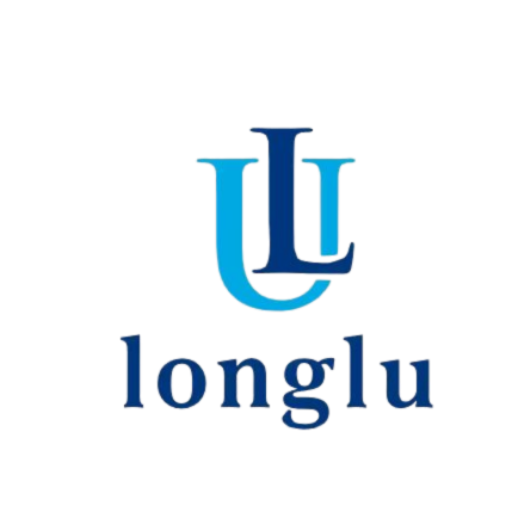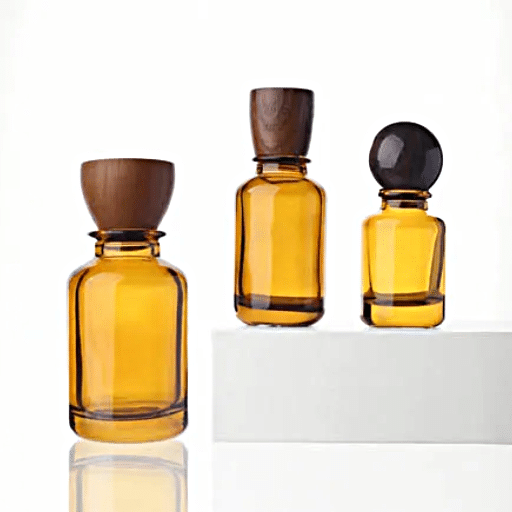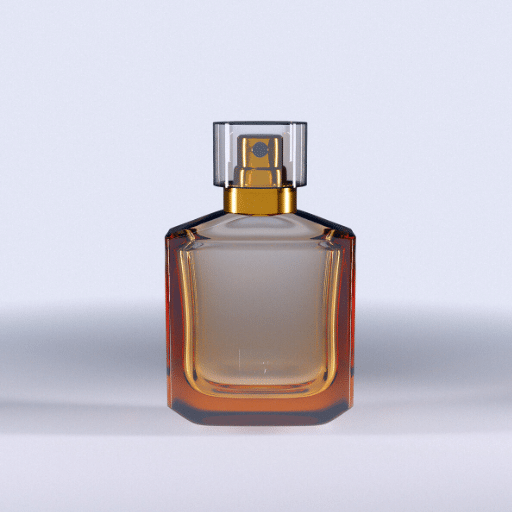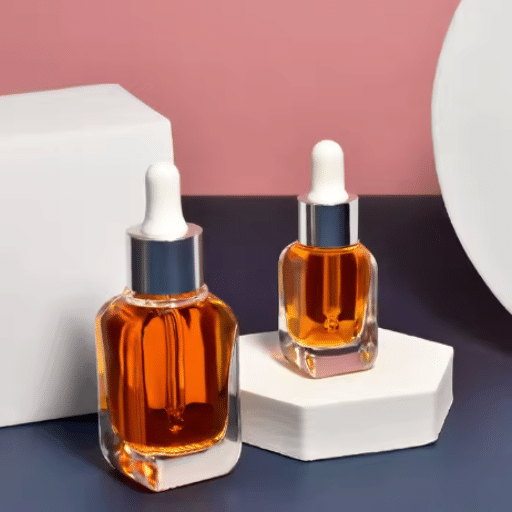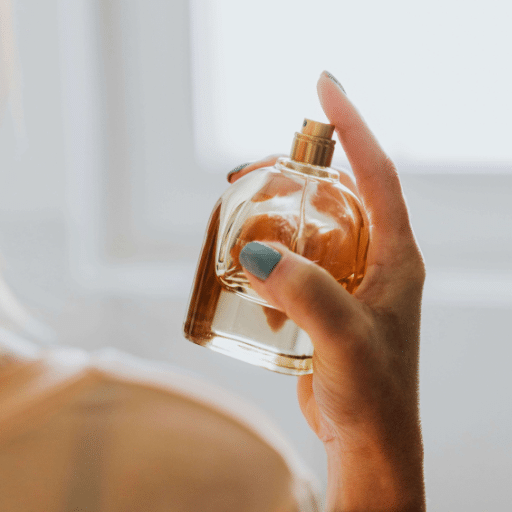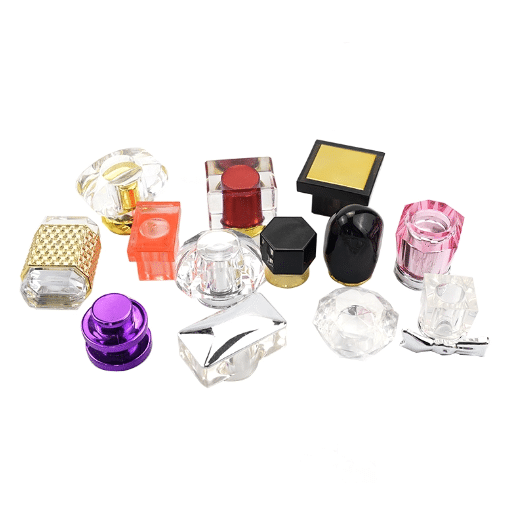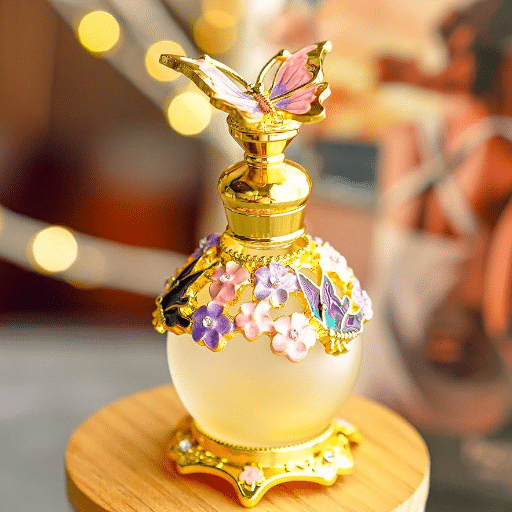For wholesale perfume bottle prices, understanding the complex system of factors that determine cost and the over-reaching pricing is essential for any enterprise to do well in the big fragrance market in which they compete. This article goes to the heart of the influences on wholesale pricing, including the selection of materials, manufacturing methods, market demand, and logistics strategy. Apart from the basic explanations of the factors, the blog will also discuss which negotiation trick is most effective and reveal ways to cut costs without compromising product quality. If you have been a buyer for a long time or just entered the business, this guide will give you the necessary information to make purchasing decisions cleaner and increase profits.
Understanding Wholesale Perfume Bottle Pricing
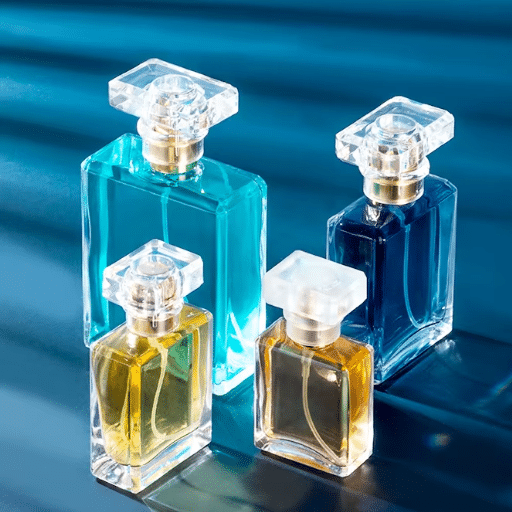
Many factors determine the wholesale price of perfume bottles. The factor that most affects cost is the quality and thickness of the glass, with higher-quality materials usually adding to the price. The presence of additional production difficulties, such as designs, shapes, and decorative features, will also lead to higher costs. Purchase quantity is a significant factor; therefore, suppliers are likely to offer their products at lower prices to buyers who purchase in bulk. Besides, the price is liable to be determined by where the company is located and how shipping is done, particularly if the materials are coming from overseas. Last but not least, supply competition and market demand will drive prices, with higher demand or greater product specialization leading to higher prices. Buyers are therefore advised to scrutinize these factors and transact smartly to ensure they get the best prices.
What are Wholesale Perfume Bottles?
Buying wholesale perfume bottles is about acquiring a large number of perfume containers manufactured or sold for resale, manufacturing, or distribution. These bottles are usually purchased from the makers or from suppliers specializing in large-scale production, which provides the benefits of cost efficiency and customization. They come in a wide variety of designs, materials, and sizes, ranging from glass and plastic to high-end crystal, and can satisfy different branding and functional needs. Wholesale offers design flexibility, allowing companies to create bottles that are precisely suited to specific fragrance lines or customer preferences. Moreover, these bottles are frequently reordered by fragrance manufacturers, retailers, or event organizers in large quantities, thereby lowering the purchase price through economies of scale. This stage of the market is critical to delivering much-needed support to the segments of the industry tied to the three key areas of competitive cost, aesthetic storytelling, and economies of scale.
Factors Influencing Pricing of Glass Perfume Bottles
Glass perfume bottles are costly due to the selection of the material, the manufacturing method, and the difficulty of the design. Lead-free glass is a high-quality material, and its use boosts prices due to its exceptional clarity, strength, and eco-friendliness. The newest manufacturing techniques, such as precision molding, hot stamping, or frosting, are also costly; not only do they enhance the aesthetics and functionality of the product, but they also add to the cost.
In contrast, the size of the production run is another determinant of the price. Mass production is cheaper per unit due to labor and material efficiency, while boutique production for unique models or luxury markets is more expensive. Moreover, the complexity of the production is responsible for the precision of the most minor details, such as the sculpting of metallic finishes or customized shapes. In such a case, the production of luxury perfume bottles will be expensive.
Logistics and shipping conditions could influence pricing. Specifically, in international markets, several factors — such as weight, fragility, and customs duties—come into play. Market demand trends and the increasing preference for sustainable and recyclable packaging solutions are the last straw, which will keep on changing the consumer’s mindset of paying today and the production strategies tomorrow, and, therefore, the price itself.
The Role of Fragrance and Packaging in Cost
When the price of the products is assessed, the presence of aroma & packaging elements in the final product plays a crucial role in determining overall production costs. Commonly, fragrance compositions require the use of premium-quality raw materials, such as natural essential oils and synthetic accords, many of whose ingredients are imported from different parts of the world, which affects their prices based on resource availability and geopolitical situations. Also, the inclusion of a fragrance that must retain its properties for a long time can raise the price even further, especially when combined with other components that degrade more quickly. This, in turn, leads to extensive testing and quality control procedures.
The other side of the coin is that packaging does not just serve a functional purpose; it also plays a significant role in brand positioning and consumer attraction. A high cost arises when manufacturers use premium packaging materials such as glass, metalized films, or eco-friendly substrates, along with top-tier design solutions like embossing, custom molds, or specialized closures. This industry, in particular, has gone the other way round, favoring a greener approach and striving to make recyclable or biodegradable packages more common; at the same time, this transition to planet-friendly products might hurt the local economy. The product comprises two essential, synchronized parts – fragrance and packaging – which form concurrently and are directly correlated with the product’s attractiveness to the senses, its value in the customer’s perception, and, therefore, its price and market strength.
Types of Perfume Bottles Available in Wholesale
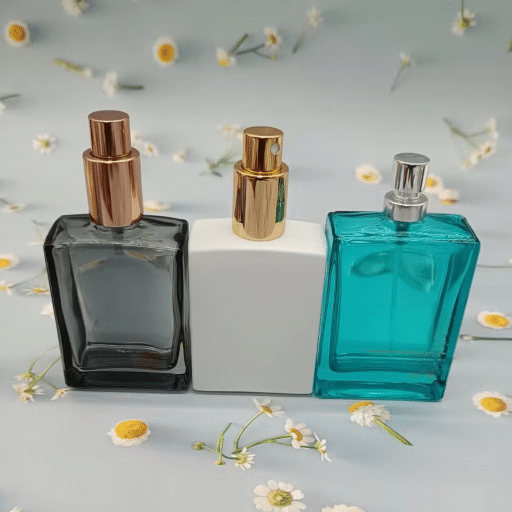
Glass Bottles
Glass perfume bottles are the most common type wholesaled. People appreciate the durability, the non-reactivity, and the top-notch appearance of the glass material. Also, the glasses can be clear, frosted, or colored, and have an option for almost every design.
Plastic Bottles
Plastic bottles, because they are lightweight and cheap, are widely used for mass-produced fragrances. The various shapes, sizes, and finishes that they are offered in make them perfect for everyday use.
Metal Bottles
Metal bottles, sometimes made from aluminum, have a sleek, modern look and excellent protection against both light and air. They are commonly used for niche or high-end fragrances.
Roll-On Bottles
Roll-on bottles come in a small size and are made to be convenient and easy to apply. These are good for traveling-sized or oil-based products and are available in glass and plastic.
Refillable Bottles
Refillable bottles are in high demand among customers seeking an eco-friendly packaging solution. They are usually made of glass or aluminum; they are meant to be reused, so their production has a lower environmental impact.
Exploring Glass and Plastic Options
| Key Point | Glass | Plastic |
|---|---|---|
| Durability | Hard, breakable | Flexible, resistant to impact |
| Weight | Heavier | Lightweight |
| Eco-Friendliness | Recyclable, lower environmental impact | Recyclable, higher environmental impact |
| Cost | Typically more expensive | Generally more affordable |
| Reusability | High, suitable for refills | Moderate, some single-use designs |
| Aesthetic Appeal | Premium, luxurious appearance | Practical, versatile finishes |
| Chemical Resistance | Highly resistant to most chemicals | May react with certain substances |
| Design Flexibility | Limited molding possibilities | High customization options |
Vials and Atomizers: Specialty Bottles for Fragrance
Vials and atomizers are essential components of the perfume industry, as they serve specific purposes for storing and dispensing scents. There are long, tiny vials, usually made of glass or the highest-quality plastic, designed to hold small amounts of liquid, often for sniffing or travel. The materials used in their production are exact, so there is little interaction with the fragrance, and the smell lasts a long time. In contrast, atomizers are a more modern and, thus, more elegant method of distributing fragrance through a fine mist system. The sprayers of these bottles are of the most precise type; hence, one will have a clear and equal application of the perfume. What makes atomizers great is their efficiency in scent spreading, which, correspondingly, means minimal product waste and a very cost-effective use.
Vials and atomizers offer a wide range of design flexibility. Because of developments in the industry, atomizer parts can now be manufactured with features such as adjustable spray volumes and a pressurized system to maintain consistent performance. The vials, on the other hand, can be found in a range of sizes and designs, from plain, clear tubes to ultra-fancy-looking containers used for luxury branding. Sustainability is also ensured through the miniaturization and non-hazardous operation of these products, mainly when used in conjunction with refillable systems. In combination, the vials and atomizers meet the exact needs of contemporary fragrance applications by adding functionality to their aesthetics, which is central to the user experience and is continually being improved.
Refillable Glass Bottles: A Sustainable Choice
Glass bottles that can be refilled have lately become among the most popular options in the cosmetics, personal care, and beverage sectors because of their cost-effectiveness and environmental benefits. The use of such bottles means a significant drop in the use of single-use plastic and, at the same time, introduces glass recycling as a continuous process without the need to worry about product degradation or purity loss. More than that, the modern glass refillable bottles have been empowered by new technologies. The current bottle designs are often characterized by anti-tampering solutions, craftsmanship that supports long-term durability and toughness, and compatibility with other reusable systems. It is a proven fact that switching to glass packaging in industries such as perfume-making could help cut plastic consumption by millions of tons each year. Furthermore, it is clear that a large group of people is more likely to support sustainable packaging practices, and for this reason, they are even willing to bear the costs imposed by nature. It is clear that the reusable glass bottles are not only the perfect tool for preserving the planet, but also the ones that will sell the most in the market, which will always demand environmentally responsible and innovative packaging solutions.
Negotiating Wholesale Prices for Perfume Bottles
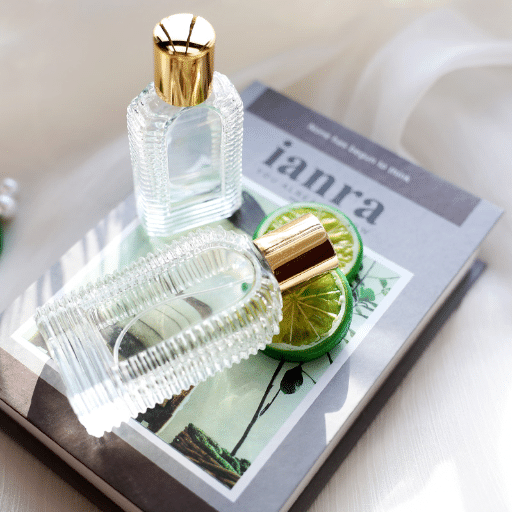
To get the best prices, the main factors to consider when negotiating wholesale rates for fragrance containers are: sales volume, the material used, and product customization. Greater sales mean lower prices per unit in general because of savings coming from mass production. Glass containers, even though they are commonly more expensive than plastic ones, are increasingly being anointed as a premium and environmentally friendly alternative, so they are an excellent choice for eco-conscious customers who are willing to make an initial investment. The way to go with customized orders is to work with manufacturers to simplify the production process, minimize costs, and retain product quality. Market analysis and vendor quotation comparisons are the two main strategies for securing the best deals, and they should always be followed by forming alliances with those vendors in exchange for future discounts or other incentives.
How to Approach Suppliers for Bulk Orders
When you decide to place large orders with suppliers, two basic requirements are preparation and clear communication. For the first step, you must conduct in-depth research on the supplier’s history, their production capabilities, and the products they offer, and then place an order only if the products meet your needs. Indicate the volume of your order, the product specification, and the expected delivery date, all of which will be important for suppliers to understand the project’s feasibility and adjust their pricing appropriately. Adding industry standards, such as average bulk discounts or shipping costs, into the process will give you the power to negotiate more effectively and secure competitive pricing. The next step is to finalize the terms for payment, returns, and quality checks, which will help reduce risks. For quality purposes, it’s a good idea to request samples before actually committing. Build a professional relationship with the supplier by emphasizing that you envision long-term mutual benefits, as this will foster trust and the possibility of the supplier adding value by fast-tracking orders or offering exclusivity deals.
Key Negotiation Tactics for Cost Optimization
Leverage Market Data for Benchmarking
Perform a detailed examination of the prevailing market trends and prevailing industry price standards to set the yardsticks for your negotiations. Knowing competitors’ price setups and suppliers’ cost factors enables more informed discussions. Apply this information to highlight the differences and vindicate the competitive pricing that goes hand in hand with the market.
Employ Volume-Based Agreements
Dealing in bulk or signing long-term agreements can significantly diminish the costs. Suppliers usually offer discounts for higher order quantities or for assured regular buys. Companies can demonstrate that they are essential, high-volume clients worthy of special pricing by combining orders whenever possible and providing production forecasts.
Integrate Cost Breakdown Analysis
A thorough supplier cost analysis request not only increases transparency but also provides an opportunity to discover and resolve cost-effectiveness issues. The analysis usually identifies negotiable points such as logistics, packaging, or raw materials, and thus allows focusing on the cost segments that drive the highest costs.
Implement Multi-Sourcing Strategies
When possible, it is advisable to spread the supplier base across several vendors. This reduces dependence on a single supplier and encourages competition among vendors. The availability of substitute grants your surveying directions more power and thus helps you communicate the same message to the vendor, thereby reducing potential risks related to the supply chain.
Timing and Strategic Flexibility
If you position yourself so that the supplier feels their offers can be part of specific time-based benefits (such as the end of a quarter or a fiscal year), you will gain through the bargain. Among the reasons the vendors may be more amenable to a beneficial negotiation is that their competitors push them to meet the objective or dispose of the stock. Moreover, having the leeway to change dates and delivery periods may increase negotiating power, as it aligns with the supplier’s operational flows.
Understanding Minimum Order Quantities and Discounts
Minimum Order Quantities (MOQs) are essential to consider when entering into supplier agreements. They are the minimum number of items the buyer must buy at once. MOQs are most often used to justify production or operational costs, especially in industries where economies of scale are a main factor. Usually, suppliers determine MOQs based on factors such as material costs, production processes, and warehouse management requirements. To avoid buying too much, which might lead to extra storage costs or losses, buyers need to do their best, scrutinizing the demand forecast and working on fast-moving inventory.
It is common for discount structures to be linked to MOQs, and their purpose is to encourage bulk orders. For example, tiered discount schemes offer increasingly attractive prices as the order amount increases. The buyers have the benefit of cost savings with the help of those systems; still, they have to very thoroughly negotiate the trade-off of the total value proposition of the offer. This involves, among other things, evaluating choices regarding product attributes, such as capital durability, warehousing capacity, and the risk of material obsolescence for products with high turnover. Furthermore, another opportunity to involve the buyer in the MOQ could be explored through collaborative procurement, which means pulling buyers’ orders together and helping organizations meet MOQs, stay within constraints, or avoid overstock.
Market Trends in Wholesale Perfume Bottles
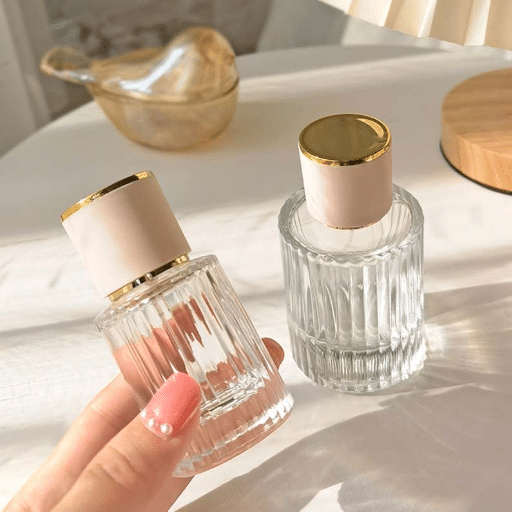
The perfume bottle market is seeing significant changes due to evolving consumer preferences and increased awareness of environmental issues. The new thing in the market is bottles with a simple design, and at the same time, the style must be elegant and modern; it is a sign of luxury. The other thing that is happening is that more companies are using sustainable materials, this can be seen clearly by the use of recycled glass and using biodegradable components, even tree-free paper is catching on in some areas.
Another trend is the growing popularity of custom options, as brands aim to position themselves through individual packaging in the highly competitive market. Such options include embossing, shaping, and even innovative closures. Moreover, lightweight designs are becoming increasingly acceptable, as reflected in lower transportation costs and a smaller adverse environmental impact. Last but not least, the advent of e-commerce has heightened the need for packaging that not only guarantees product safety but also looks attractive on the screen.
Current Trends in Fragrance Packaging
Sustainable materials have become a prominent feature of fragrance packaging, driven by consumers’ growing preference for environmentally friendly products. Producers are increasingly moving to materials that are either biodegradable, recyclable, or compostable, including plant-based plastics, glass, and biopolymers made from renewable sources and with unique properties. The use of refillable glass bottles, for instance, is a major contributor to reducing single-use waste. At the same time, the outer packaging, made of recycled paperboard, increases the product’s eco-friendly appeal. These innovative approaches align with the most important global sustainability objectives and are designed to address the steadily rising restrictions on packaging waste.
The integration of innovative packaging technology has given consumer behaviour a new shape in fragrance products. Through QR codes, NFC tags, and even AR items added to the packages, customers can get as many details as they want about the product, brands can tell their stories, and application tips will be provided. All these user-friendly features do not merely make the customer’s job easier but also create a closeness between the customer and the product, which, in turn, fosters brand loyalty. Moreover, these technologies, at the same time, make the system accurate and, in a sense, very reliable, most importantly through the track-and-trace feature.
Impact of E-commerce on Wholesale Perfume Bottle Sales
The wholesale perfume bottle industry has been influenced to a considerable extent by consumers brought in through e-commerce. As a result, both the market and consumer levels have been affected. The online platforms have given wholesalers a competitive advantage, saving both time and money. Wholesalers can now compare product prices displayed online, select in-demand items, and place orders without much stress. A new era of demand for premium, customized perfume bottles has emerged due to the e-commerce experience. Luxurious fragrance sales market data from various researchers, driven by e-commerce, suggest the market will remain on an upward trajectory for some time, with some forecasts exceeding a 5% annual compound growth rate (CAGR).
Real-time analytics and insights into consumer behavior are also enabled by E-commerce, allowing wholesalers to predict trend direction and adjust production strategies accordingly. The collection of data on seasonal preferences and popular design choices, for example, not only enables the company to create targeted marketing campaigns but also to optimize its product offerings. When we talk about e-commerce platforms, they fit in with other technologies like augmented reality and virtual displays. One outcome of this blend is that customers now have the opportunity to preview bottle designs or branding elements, which, in turn, means they will make decisions more wisely and that their overall satisfaction will increase. As such, the digital evolution underscores e-commerce’s essential role in the wholesale perfume bottle market, enhancing operational efficiency in the supply chain.
Best Practices for Purchasing Perfume Bottles Wholesale
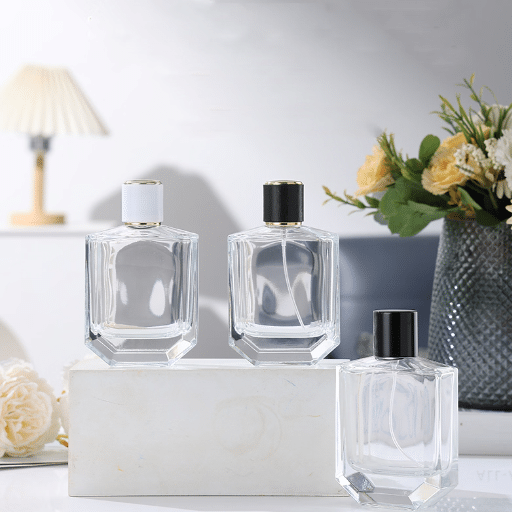
1Understand Your Requirements
The type, size, and material of the perfume bottles you need can be broadly defined and may vary depending on the products you are selling, the branding you want to use, and the places/special events where the product will be used.
2Assess Supplier Credibility
Choose well-known suppliers and avoid those that offer substandard products or services. One example of such a supplier is a manufacturer that is not certified and has few or no customer reviews. They can also be a changing company compared to others in the business, having brought their certifications.
3Request Samples Before Bulk Orders
It is essential not to approve or deny purchasing a large number of products without examining a physical sample, as it is tough to identify potential problems with shipments of such bulk items.
4Evaluate MOQ (Minimum Order Quantities)
Make sure you have the supplier’s minimum order requirements approved and that they align with your purchasing power. If necessary, bargain to find the right balance between the quantity and the cost efficiency.
5Analyze Pricing and Payment Terms
One of the best advice for buyers looking for competitive rates is to compare prices across different suppliers. Among other potential benefits, they are more likely to be offered products with clear price tags and payment terms that can be adjusted to fit your cash flow needs and remain cost-effective.
6Consider Sustainability
Prefer manufacturers that use green, sustainable production methods. This aligns with the growing public interest in going green.
Conducting Market Research Before Purchase
To make the right purchasing decisions, a thorough market analysis is needed to ensure they are optimal and aligned with the company’s purpose. Therefore, the first step for you is to note the main market moves, such as changes in customer tastes, new technologies emerging, and strong ups and downs in the supply chain. First and foremost, use the most reliable sources of knowledge in the business: industry reports, case studies, and statistical data. Such a complete picture of the market must always be available. Moreover, an optimal choice of the provider can only be made if everybody has access to essential facts and to a good combination of the best and most recent data. Then, the information you gather can provide a clear account of the cases pending for the business and ensure that the situation is understood from the supplier to the final consumer.
Evaluating Supplier Reliability and Quality
To effectively assess the supplier’s reliability and quality, it is essential to use a comprehensive, three-sided approach that combines quantitative and qualitative metrics. Start by examining the historical data like delivery time, order accuracy, and defect rate. This method will provide a clear, specific profile of the supplier’s reliability over the years. In addition, take a look at the certifications, industry compliance records, and adherence to quality standards like ISO 9001 to appreciate that the supplier has taken essential steps.
When it comes to qualitative evaluations, the first step is to engage directly with suppliers. Standard compliance checks, method assessments, and interviews with the supplier’s management are all part of this. These dealings might be the best way to get all the information about the suppliers’ capacity, changes they can make, and even their attitude towards development. It is also good to know that, if the supplier is not a manufacturer, one should conduct this research to be entirely sure the supplier is operating ethically and following best practices in the market. Further, after testing the data several times, it is likely a good result.
Reference Sources
Perfume Packaging Wholesale: Your Guide to Finding the Best Options
Summary: This guide provides an overview of wholesale perfume packaging options, focusing on materials, designs, and customization possibilities. It offers insights into selecting the best packaging solutions to meet business needs.
Cosmetic and Perfumery Glass Bottles Market Size, Share
Summary: This market report analyzes the global cosmetic and perfumery glass bottles market, projecting growth from USD 2.47 billion in 2025 to USD 3.85 billion in subsequent years.
Frequently Asked Questions (FAQs)
How to choose the best glass perfume bottles for my products?
Selecting the best glass perfume bottles is a complex process that requires evaluating several key factors. Initially, think about the type of perfume you are going to market; e.g., a dense aroma may be well suited to frosted glass bottles, whereas a faint perfume may be better suited to clear glass bottles. Also, container capacity should not be the last thing to consider; the most common sizes are 30 ml and 100 ml, depending on the segment you are targeting. Besides, consider making the bottles unique in style and practicality —for example, whether you prefer glass spray bottles or refillable ones —which can, in turn, boost customer satisfaction. Besides, make sure the bottles are well sealed and connected to your perfume pump or spray for optimal functionality.
What is the typical wholesale price for glass perfume bottles?
Wholesale glass perfume bottles usually have prices that vary based on design, size, and customization options. Mainly, the cost can range from a few cents per basic, small perfume bottle to several dollars per more complex, decorative perfume bottles and premium packaging solutions. Large purchases quite often mean paying less, especially if popular sizes, e.g., 50 ml or 100 ml, are bought. Furthermore, suppliers’ pricing for empty glass perfume bottles is often highly competitive, making them a desirable option for businesses creating their own fragrance lines. Always make your decision to buy at the wholesale price that best fits your budget by comparing the various suppliers.
Can I customize empty perfume bottles for my brand?
Sure thing! The best way to enhance your brand’s identity is to customize the empty perfume bottles. This is a more popular method, and many suppliers now offer screen printing or label application services to personalize clients’ inventory with their branding or design. This is very good for custom perfume bottles, as businesses can come up with a design that is both exclusive and easily visible in the market. At the same time, one can choose from many styles—a square perfume bottle or one with gold highlights that fit the brand’s look. Moreover, the selection process should take into account the practicability of the branding choices so that the perfume spray or atomizer workings are not interrupted.
What types of perfume packaging are available for bulk purchases?
When you buy large quantities of perfume packaging, you can choose from different options that depend on your preferences. These can take the form of glass spray bottles, roller bottles, and refillable bottles, appealing to various consumer groups. You may as well select materials that include frosted and clear glass to achieve the desired outward appearance of the fragrance products. By choosing ornamental perfume bottles and unique designs, businesses can convey a high-end brand image. For sure, there are many suppliers offering packaging solutions with fast shipping and the most competitive prices, which will not only propel your brand but also keep your staple products in stock all the time.
